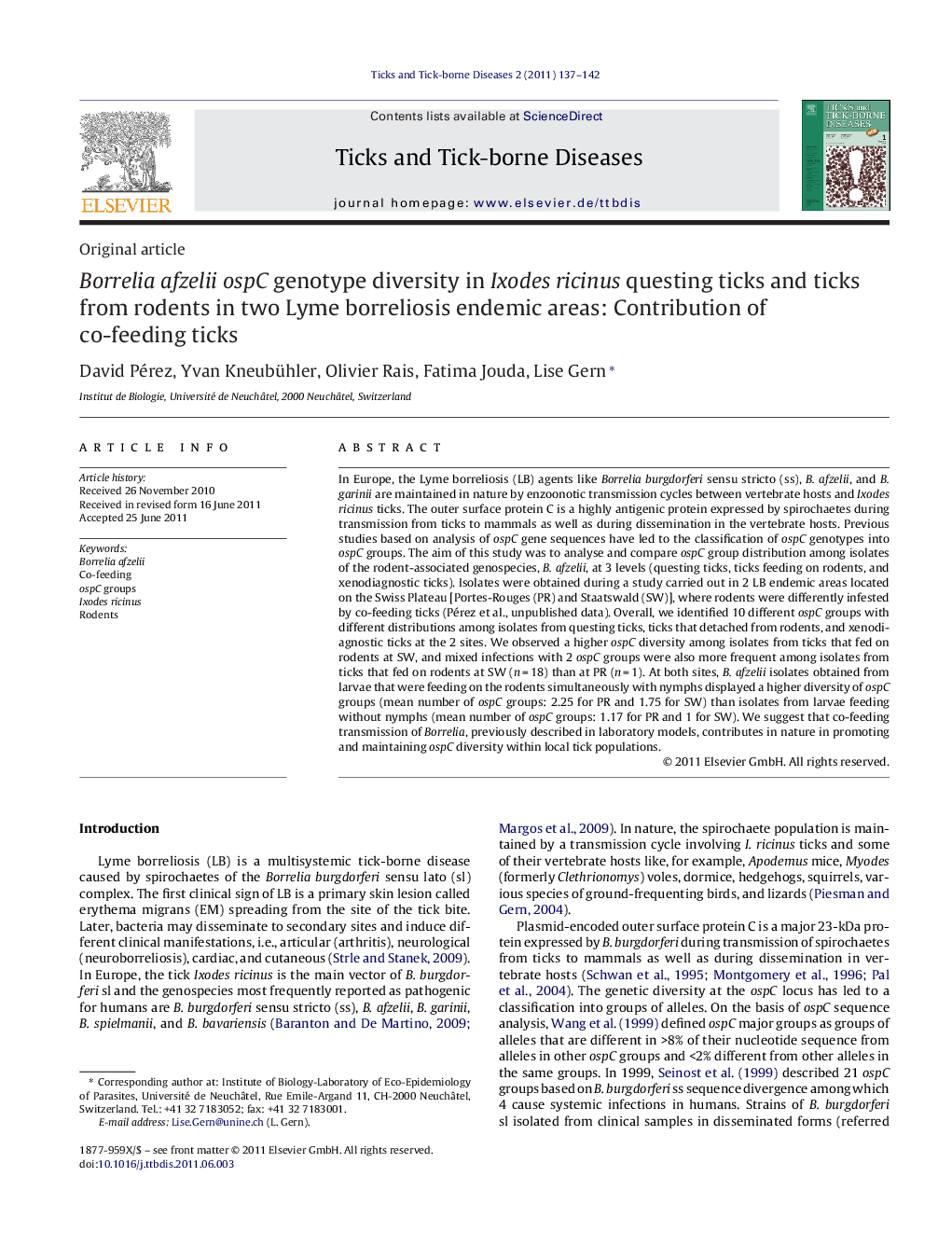| کد مقاله | کد نشریه | سال انتشار | مقاله انگلیسی | نسخه تمام متن |
|---|---|---|---|---|
| 2473950 | 1113106 | 2011 | 6 صفحه PDF | دانلود رایگان |

In Europe, the Lyme borreliosis (LB) agents like Borrelia burgdorferi sensu stricto (ss), B. afzelii, and B. garinii are maintained in nature by enzoonotic transmission cycles between vertebrate hosts and Ixodes ricinus ticks. The outer surface protein C is a highly antigenic protein expressed by spirochaetes during transmission from ticks to mammals as well as during dissemination in the vertebrate hosts. Previous studies based on analysis of ospC gene sequences have led to the classification of ospC genotypes into ospC groups. The aim of this study was to analyse and compare ospC group distribution among isolates of the rodent-associated genospecies, B. afzelii, at 3 levels (questing ticks, ticks feeding on rodents, and xenodiagnostic ticks). Isolates were obtained during a study carried out in 2 LB endemic areas located on the Swiss Plateau [Portes-Rouges (PR) and Staatswald (SW)], where rodents were differently infested by co-feeding ticks (Pérez et al., unpublished data). Overall, we identified 10 different ospC groups with different distributions among isolates from questing ticks, ticks that detached from rodents, and xenodiagnostic ticks at the 2 sites. We observed a higher ospC diversity among isolates from ticks that fed on rodents at SW, and mixed infections with 2 ospC groups were also more frequent among isolates from ticks that fed on rodents at SW (n = 18) than at PR (n = 1). At both sites, B. afzelii isolates obtained from larvae that were feeding on the rodents simultaneously with nymphs displayed a higher diversity of ospC groups (mean number of ospC groups: 2.25 for PR and 1.75 for SW) than isolates from larvae feeding without nymphs (mean number of ospC groups: 1.17 for PR and 1 for SW). We suggest that co-feeding transmission of Borrelia, previously described in laboratory models, contributes in nature in promoting and maintaining ospC diversity within local tick populations.
Journal: Ticks and Tick-borne Diseases - Volume 2, Issue 3, September 2011, Pages 137–142